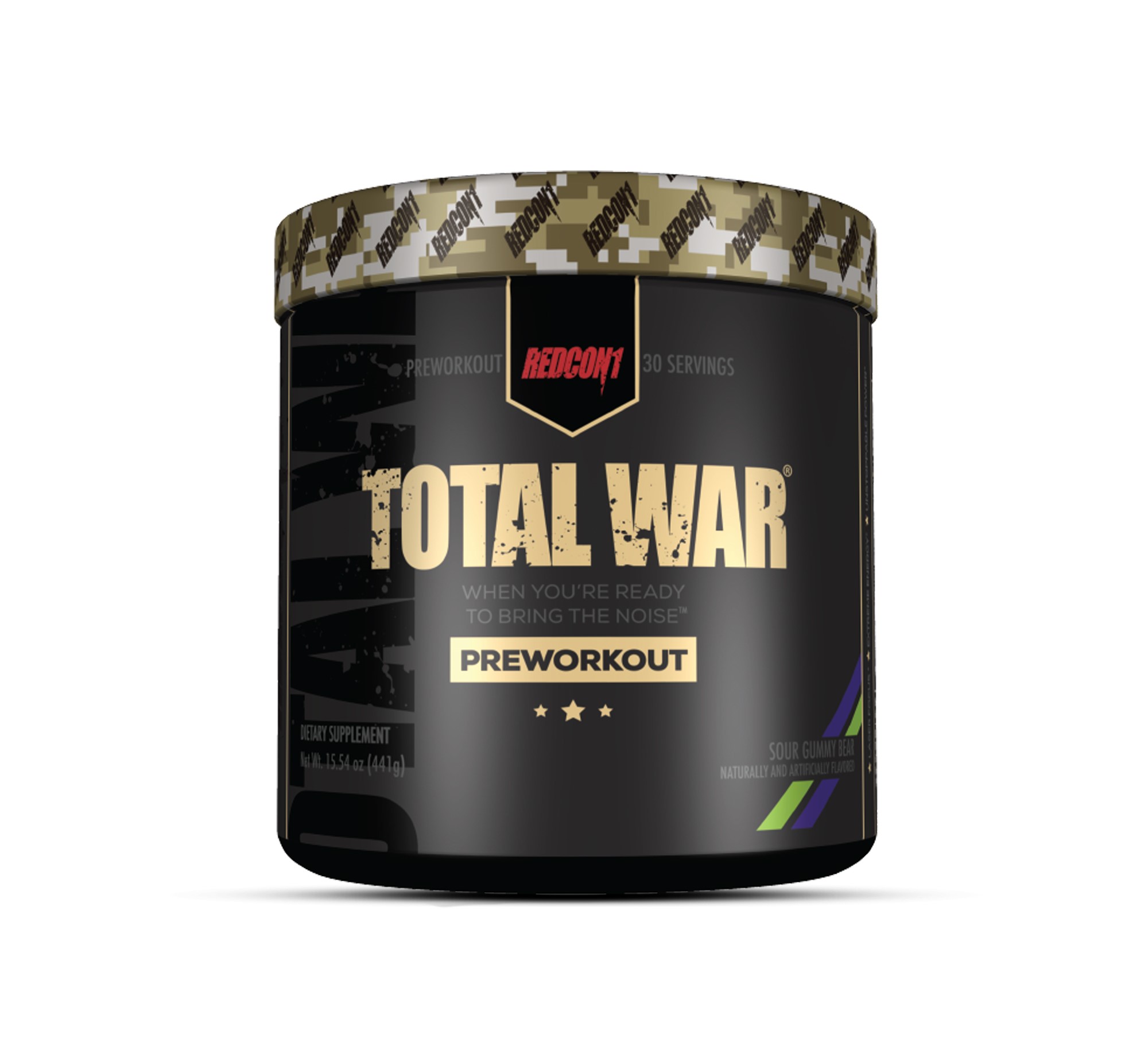Home>Misc>Featured>How Long Does It Take To Build Up Endurance


Featured
How Long Does It Take To Build Up Endurance
Modified: January 22, 2024
Discover how long it takes to build up endurance and achieve your fitness goals with our featured guide.
Introduction
Building endurance is essential for individuals looking to improve their fitness levels, enhance athletic performance, or participate in endurance-based activities such as marathon running, cycling, or swimming. Endurance refers to the body’s ability to sustain prolonged physical activity over an extended period of time, and it plays a crucial role in overall fitness and stamina.
Engaging in exercises that increase endurance provides numerous benefits, including improved cardiovascular health, increased stamina, enhanced aerobic capacity, and efficient energy utilization. However, the process of building endurance is not a quick fix, but rather a gradual progression that requires consistency, goal setting, and a well-designed training plan.
This article will delve into the factors that affect endurance building, guide you in assessing your current fitness level, help you determine your endurance building objectives, and provide steps to develop an effective training plan. You will learn about the importance of incorporating various types of exercises, gradually increasing intensity and duration, incorporating interval training, and adopting proper nutrition and hydration practices. Additionally, rest and recovery will be emphasized as vital components of the endurance building journey.
Tracking progress and adjusting your training plan as needed will also be discussed, as they are crucial for ensuring continuous improvement and avoiding plateaus. By following these guidelines and incorporating them into your training routine, you will be well on your way to building endurance and achieving your fitness goals.
Factors Affecting Endurance Building
Building endurance is a multifaceted process that is influenced by various factors. Understanding these factors can help you develop a more effective training plan and optimize your progress. Here are some key factors that can impact your endurance building journey:
- Genetics: Your genetic makeup plays a significant role in determining your natural endurance capabilities. Some individuals may have a genetic advantage when it comes to endurance, while others may need to put in more effort to achieve the same level of fitness.
- Current Fitness Level: Your starting point can affect how quickly you are able to build endurance. Those who are more physically fit may experience faster progress compared to individuals who are starting from a relatively lower fitness level.
- Age: Age can impact endurance building. Generally, younger individuals tend to have higher aerobic capacities and may progress more quickly. However, with proper training and dedication, individuals of all ages can significantly improve their endurance.
- Body Composition: Body composition, including muscle mass and body fat percentage, can influence your endurance levels. A higher proportion of lean muscle mass can contribute to improved endurance, as muscles are responsible for generating the energy needed to sustain physical activity.
- Training Program: The design and structure of your training program are crucial for building endurance. Factors such as exercise selection, intensity, duration, frequency, and progression are all key components that must be taken into consideration. A well-designed training program will systematically challenge your body and promote continuous adaptation.
- Diet and Hydration: Proper nutrition and hydration are essential for fueling your body and supporting endurance building. Adequate intake of carbohydrates, protein, and healthy fats, along with staying hydrated, can optimize energy levels and enhance performance during prolonged physical activity.
- Rest and Recovery: Giving your body sufficient rest and recovery time is crucial for building endurance. It is during rest periods that your body repairs and strengthens the muscles, allowing for adaptation and improved performance.
- Mental Resilience: Endurance building requires mental resilience and determination. Developing a positive mindset, setting realistic goals, and staying motivated can greatly influence your ability to push through challenges and stick to your training routine.
By considering and addressing these factors, you can optimize your endurance building journey and achieve long-lasting results. Keep in mind that everyone’s journey is unique, so it is important to listen to your body, make adjustments as needed, and stay consistent in your training efforts.
Starting Point: Assessing Your Current Fitness Level
Before embarking on your endurance building journey, it is crucial to assess your current fitness level. Evaluating where you are starting from will help you set realistic goals, track your progress, and tailor your training program to your individual needs. Here are some key steps to assess your current fitness level:
- Cardiovascular Endurance Test: Begin by performing a cardiovascular endurance test, such as a timed run or a cycling session. Note the duration or distance you are able to sustain before feeling fatigued. This will provide a baseline for your endurance level.
- Strength Assessment: While endurance training primarily focuses on aerobic capacity, having a baseline understanding of your strength level is important. Perform basic strength exercises, such as push-ups, squats, and planks, and assess your ability to complete repetitions with proper form.
- Flexibility Evaluation: Flexibility plays a role in overall fitness and can impact your ability to perform certain exercises. Assess your flexibility through exercises like reaching for your toes, performing a seated hamstring stretch, or attempting a kneeling hip flexor stretch.
- Overall Health Assessment: Consider any existing health conditions or injuries that may affect your endurance building journey. Consult with a healthcare professional if needed to ensure you are clear to engage in physical activity.
Once you have completed these assessments, you will have a better understanding of your current fitness level and potential areas for improvement. Remember that this assessment is not meant to be a judgment of your capabilities, but rather a starting point to guide your endurance building efforts.
Additionally, keep in mind that progress is not always linear. Building endurance takes time, and your fitness level may fluctuate throughout your training journey. Be patient with yourself and celebrate small victories along the way.
By assessing your current fitness level, you can set realistic goals and design a training program that is tailored to your individual needs. This will lay the foundation for a successful endurance building journey and help you maximize your potential for progress.
Setting Goals: Determining Your Endurance Building Objectives
Setting clear and achievable goals is a critical step in the endurance building process. Having specific objectives will keep you motivated, provide direction for your training, and allow you to measure your progress. Here are some essential tips for determining your endurance building objectives:
- Be Specific: Set clear and specific goals that define what you want to achieve. For example, instead of stating a vague goal like “improve endurance,” aim for something more specific like “run a 5K race in under 30 minutes” or “cycle 50 kilometers without stopping.”
- Consider Your Current Fitness Level: Be realistic about your starting point and consider your current fitness level when setting goals. It’s important to challenge yourself, but setting unattainable goals can lead to frustration and demotivation. Pacing your progress is key.
- Set Short-Term and Long-Term Goals: Break down your endurance building objectives into short-term and long-term goals. Short-term goals can be achieved within a few weeks or months, while long-term goals will require more time and effort. Having a combination of both types of goals helps maintain motivation and provides milestones along the way.
- Make Them Measurable: Ensure that your goals are measurable, meaning they can be quantified or tracked. This allows you to monitor your progress and make adjustments to your training plan as needed. For example, instead of saying “improve my endurance,” set a measurable goal like “increase my running distance by 1 kilometer each week.”
- Keep Them Realistic: While it’s important to challenge yourself, it’s equally crucial to set realistic goals. Consider factors such as your current fitness level, time availability for training, and any other commitments you may have. Unrealistic goals can lead to burnout or injury.
- Make Them Time-Bound: Attach a deadline or time frame to your goals. Having a specific timeline creates a sense of urgency and helps you stay focused and accountable. For example, setting a goal to run a half-marathon within 6 months provides a clear target to work towards.
- Review and Adjust: Regularly review your goals and reassess your progress. If needed, make adjustments to your goals to ensure they remain challenging but attainable. As you progress, you may find that you need to set new goals to keep pushing yourself.
Remember, goal-setting is a personal process, and your objectives should reflect your own desires and aspirations. By setting clear, realistic, and measurable goals, you will have a roadmap for your endurance building journey and a strong foundation for success.
Developing a Training Plan
A well-designed training plan is the cornerstone of effective endurance building. It provides structure, progression, and consistency to your workouts, allowing you to gradually improve your endurance. Here are key steps to develop an effective training plan:
- Define Your Training Frequency: Determine how many days per week you can dedicate to endurance training. Aim for a balance between challenging yourself and allowing sufficient time for rest and recovery.
- Choose Your Preferred Endurance Activities: Select the types of exercises you enjoy and are suitable for your goals. Running, cycling, swimming, and hiking are popular choices, but there are numerous options to explore.
- Vary Your Workouts: Incorporate different types of workouts to target different aspects of endurance. This can include long slow distance runs, intervals, tempo runs, cross-training, and hill repeats. Mixing up your workouts not only adds variety but also challenges your body in different ways.
- Gradually Increase Intensity and Duration: Progression is key when building endurance. Start with manageable intensity and duration levels, and gradually increase them over time. This allows your body to adapt and prevents overuse injuries.
- Incorporate Interval Training: Interval training involves alternating between periods of high-intensity exercise and periods of recovery. This type of training can improve aerobic capacity, speed, and overall endurance. For example, you can alternate between running at a faster pace for a set time or distance and then recovering with a slower jog or walk.
- Include Strength Training: Strength training should not be overlooked in endurance building. Incorporate exercises that target major muscle groups, such as squats, lunges, push-ups, and core exercises. Building strength will support proper form and posture during endurance activities.
- Ensure Proper Warm-up and Cool-down: Prioritize warming up before each session with dynamic stretching and light cardio. Likewise, cool down with static stretches and gentle movements to aid in recovery and prevent muscle soreness.
- Listen to Your Body: Pay attention to how your body feels and adjust your training plan accordingly. Rest days and recovery periods are just as important as training days and should be incorporated into your plan.
- Track Your Progress: Keep a training log or use fitness tracking apps to document your workouts, monitor your progress, and identify areas for improvement. Regularly reviewing your progress can provide motivation and help you make informed adjustments to your training plan.
Remember, consistency is key when it comes to building endurance. Stick to your training plan, stay motivated, and be patient. With time and dedication, you will witness significant improvements in your endurance levels and achieve your fitness goals.
Type and Frequency of Exercises
When it comes to building endurance, the type and frequency of exercises you choose to incorporate into your training routine are crucial. By selecting the right exercises and finding a balance between various activities, you can maximize your endurance-building potential. Here are key considerations for choosing the type and frequency of exercises:
- Select Endurance-Based Activities: Choose exercises that primarily focus on aerobic conditioning and require sustained physical effort. Running, cycling, swimming, rowing, and hiking are excellent choices that engage large muscle groups and elevate heart rate.
- Vary Your Training: Incorporating a mix of low-impact and high-impact exercises can help prevent overuse injuries and keep your training routine interesting. For example, you can alternate running days with cycling or swimming to reduce strain on your joints.
- Consider Cross-Training: Cross-training involves engaging in different types of exercises and activities. It not only helps prevent boredom but also works different muscle groups and challenges your body in new ways. Strength training, yoga, and Pilates are great examples of cross-training activities to improve overall fitness.
- Determine Your Training Frequency: The frequency of your endurance-building exercises will depend on your schedule, fitness level, and recovery abilities. Aim for at least 3-4 sessions per week to allow your body to adapt and progress. Avoid consecutive intense workouts to give your body sufficient time to recover.
- Include Long Slow Distance (LSD) Workouts: Long slow distance workouts involve sustained low- to moderate-intensity efforts that improve aerobic capacity and endurance. These workouts should be longer in duration, typically ranging from 60 minutes to several hours, depending on your fitness level.
- Add Variety with Interval Training: Intervals involve alternating between periods of high-intensity exercise and recovery or low-intensity exercise. This type of training helps boost aerobic capacity, improve speed, and increase overall endurance. You can incorporate interval sessions into your weekly training routine, gradually increasing the intensity and duration over time.
- Listen to Your Body: Pay attention to how your body responds to different exercises and adjust your training routine accordingly. If a particular exercise causes pain or discomfort, seek advice from a professional and modify your routine as needed. Your body’s feedback is an essential guide for effective and safe training.
- Consult a Professional: If you are new to endurance training or have specific goals in mind, it can be beneficial to consult with a certified fitness professional or coach. They can help tailor a training plan to your individual needs and provide guidance on exercise selection and frequency.
Remember, consistency and progression are key when it comes to building endurance. Gradually increase the duration and intensity of your workouts, but also give your body enough time to recover and adapt. By incorporating a variety of exercises and finding a training schedule that works for you, you will be well on your way to improving your endurance and achieving your fitness goals.
Progression: Gradually Increasing Intensity and Duration
Progression is a key principle when it comes to building endurance. Gradually increasing the intensity and duration of your workouts challenges your body and allows for consistent improvement. Here are some important guidelines to follow when progressing your endurance training:
- Start Slow and Gradually Build: It is important to start at an intensity and duration that is manageable for your current fitness level. Begin with shorter workouts at a moderate intensity and gradually increase the time and effort as your body adapts.
- Adhere to the 10% Rule: A widely recognized guideline in endurance training is the 10% rule. This rule suggests increasing the duration or intensity of your workouts by no more than 10% each week. This gradual progression helps prevent overuse injuries and allows your body to adapt to the demands of your training.
- Use a Mix of Long and Short Workouts: Incorporate both longer, slower workouts and shorter, more intense workouts into your routine. Long, slow distance (LSD) workouts build aerobic capacity and improve endurance, while shorter, high-intensity workouts like intervals help boost speed and cardiovascular fitness.
- Monitor Your Heart Rate: Monitoring your heart rate during workouts can help determine appropriate intensity levels and track your progress. Aim for an intensity that allows you to maintain a conversation but still challenges your cardiovascular system.
- Track and Record Your Workouts: Keep a record of your workouts, noting the duration, intensity, and any improvements you observe. This will help you see your progress over time and provide motivation to keep pushing forward.
- Listen to Your Body: Pay attention to how your body feels during and after workouts. If you experience persistent fatigue, excessive soreness, or pain, it may be a sign that you need to adjust your training and allow for more recovery time.
- Periodize Your Training: Consider implementing a periodization plan, which involves dividing your training into distinct phases. This allows for targeted focus on different aspects of endurance, such as building a base, increasing intensity, and tapering before an event.
- Seek Guidance from a Professional: If you are new to endurance training or have specific goals in mind, consulting a certified fitness professional or endurance coach can provide valuable guidance. They can design a progressive training plan tailored to your needs and help ensure you are progressing safely and effectively.
Remember, progress is individual, and everyone’s body adapts at a different pace. It is essential to be patient, listen to your body, and make adjustments as needed. By gradually increasing the intensity and duration of your workouts over time, you will witness significant improvements in your endurance and reach new levels of fitness.
Incorporating Interval Training
Interval training is a highly effective method for building endurance, improving speed, and increasing overall cardiovascular fitness. By alternating between periods of high-intensity exercise and periods of recovery, interval training challenges your body in a way that can lead to significant improvements in endurance capacity. Here are key considerations for incorporating interval training into your endurance-building routine:
- Understand the Benefits: Interval training helps improve aerobic capacity, enhances your body’s ability to use oxygen efficiently, and increases the production and delivery of energy to muscles. This leads to improved endurance, faster running times, and enhanced athletic performance.
- Choose an Appropriate Work-to-Rest Ratio: The work-to-rest ratio is the duration of the high-intensity interval compared to the duration of the recovery interval. Common ratios include 1:1, 2:1, or even 1:2. Experiment with different ratios to find the one that challenges you while still allowing for sufficient recovery.
- Select the Appropriate Exercise: Interval training can be applied to various forms of cardiovascular exercise. Running, cycling, swimming, rowing, and even jumping rope can all be used for interval training. Choose an activity that you enjoy and that is suitable for your fitness level.
- Determine the Intensity: During the high-intensity intervals, push yourself to a level that feels challenging but sustainable. You should be working at a hard effort, but still be able to maintain proper form and technique. The recovery intervals should allow you to catch your breath and partially recover before the next high-intensity interval.
- Start with Interval Sessions Once a Week: If you are new to interval training, start by incorporating one interval session into your weekly training routine. As you become more comfortable and experienced, gradually increase to two or three sessions per week.
- Gradually Increase Intensity and Duration: Over time, strive to increase the intensity and duration of the high-intensity intervals while maintaining the appropriate recovery periods. Start with shorter intervals and gradually progress to longer ones as you build endurance.
- Experiment with Different Interval Formats: There are various interval training formats you can try, including traditional intervals (alternating between work and rest intervals), pyramid intervals (progressively increasing and then decreasing the duration or intensity of the intervals), and fartlek training (unstructured intervals with varying intensities).
- Be Mindful of Proper Warm-up and Cool-down: Before starting your interval training session, ensure you warm up properly to prepare your body for the intensity ahead. Include dynamic stretches and a light jog or cycle. Similarly, cool down with static stretches and a gentle jog or walk to aid in recovery and prevent muscle soreness.
- Listen to Your Body: Pay attention to your body’s signals during interval training. If you experience pain or excessive fatigue, it may indicate a need for rest or a modification of your training. Adjust your intervals accordingly to prioritize your safety and well-being.
Incorporating interval training into your endurance-building routine can take your fitness to the next level. By gradually increasing the intensity and duration of your intervals, while allowing for sufficient recovery, you will experience improvements in your endurance, speed, and overall athletic performance.
Nutrition and Hydration for Endurance Building
Proper nutrition and hydration play a crucial role in endurance building. Fueling your body with the right nutrients and staying hydrated are essential for optimal performance, energy production, and recovery. Here are key considerations for nutrition and hydration when building endurance:
- Consume a Balanced Diet: Ensure your diet includes a variety of nutrient-dense foods, including carbohydrates, proteins, and healthy fats. Carbohydrates provide the primary fuel source for endurance activities, while proteins support muscle repair and recovery.
- Choose Complex Carbohydrates: Focus on consuming complex carbohydrates such as whole grains, fruits, vegetables, and legumes. These provide sustained energy and are rich in vitamins, minerals, and fiber. Avoid excessive intake of refined sugars and processed carbohydrates.
- Time Your Meals: Eat a well-balanced meal 2-3 hours before your workout to provide adequate energy. Include a mix of carbohydrates and proteins, and opt for easily digestible foods to prevent discomfort during exercise. If time is limited, choose a light snack 30-60 minutes before your workout.
- During Prolonged Workouts, Refuel: For workouts lasting longer than 60-90 minutes, it is important to replenish your energy stores. Consume easily digestible carbohydrates, such as energy gels, sports drinks, or fruit, to maintain energy levels during the workout.
- Stay Hydrated: Hydration is crucial for endurance activities. Drink water regularly throughout the day, and consume fluids during exercise to replace what is lost through sweat. Aim to drink at least 8-10 cups (64-80 ounces) of water per day and adjust according to your individual needs and activity level.
- Electrolyte Balance: During prolonged exercise or in hot weather, replenishing electrolytes is important to maintain fluid balance and prevent dehydration. Electrolytes can be obtained through sports drinks, coconut water, or electrolyte supplements.
- Post-Workout Nutrition: Proper recovery nutrition is key to replenish glycogen stores, repair muscle tissue, and optimize recovery. Consume a combination of carbohydrates and protein within 30-60 minutes after your workout. This can be in the form of a protein shake, lean protein source, and carbohydrate-rich foods.
- Individualize your Nutrition Plan: Everyone has different dietary needs and preferences. Experiment with different foods and timing to find what works best for you. Consider working with a registered dietitian who specializes in sports nutrition to develop an individualized plan.
- Listen to Your Body: Pay attention to how your body responds to different foods and hydration strategies. Fine-tune your nutrition and hydration approach based on what makes you feel energized, comfortable, and well-fueled for your workouts.
Remember, nutrition and hydration are not only important during workouts but also play a role in everyday life. Consistently adopting healthy eating and hydration habits will support your endurance training and overall well-being.
Rest and Recovery: Importance in Building Endurance
Rest and recovery are often overlooked aspects of endurance building, but they are crucial for achieving optimal results. Allowing your body time to rest and recover between workouts is essential for building endurance, preventing overuse injuries, and improving overall performance. Here’s why rest and recovery are important in your endurance training:
- Muscle Repair and Growth: Rest allows your muscles to repair and recover from the stress placed on them during workouts. When you engage in endurance activities, tiny muscle fiber tears occur. Adequate rest periods give your body the opportunity to repair and rebuild these fibers, leading to stronger and more resilient muscles.
- Energy Restoration: Rest and recovery allow your body to replenish its energy stores. During endurance exercises, your body utilizes glycogen stored in muscles for fuel. Rest days give your body time to restore these glycogen stores, ensuring you have sufficient energy for future workouts.
- Prevention of Overtraining Syndrome: Pushing your body too hard without adequate rest can lead to overtraining syndrome. This condition is characterized by chronic fatigue, decreased performance, mood disturbances, and an increased susceptibility to injury and illness. Regular rest and recovery periods help prevent overtraining and promote overall well-being.
- Injury Prevention: Rest and recovery play a significant role in injury prevention. Overuse injuries can occur when you continually stress your muscles, joints, and connective tissues without providing enough time for recovery. Rest days give your body a chance to heal and reduce the risk of injury.
- Enhanced Performance: Including rest and recovery in your training plan can actually improve your performance. It allows your body to adapt to the demands of your training and leads to improved strength, endurance, and overall athletic performance.
- Mental Well-Being: Rest days not only benefit your physical body but also your mental well-being. Endurance training can be physically and mentally demanding. Taking regular breaks helps reduce stress, prevent burnout, and maintain a positive mindset towards your training.
- Quality Sleep: Rest and recovery also involve getting sufficient sleep, which is vital for overall health and performance. During sleep, your body releases growth hormones that aid in muscle repair, tissue regeneration, and immune function. Aim for 7-9 hours of quality sleep each night to support your endurance-building efforts.
Remember, rest and recovery are not signs of weakness but essential components of a well-rounded training program. Include rest days in your schedule, prioritize quality sleep, and listen to your body. By doing so, you will optimize your endurance-building journey and achieve long-lasting results.
Tracking Your Progress
Tracking your progress is a crucial aspect of building endurance. It allows you to monitor your improvements, stay motivated, and make informed adjustments to your training plan. Here are key considerations for effectively tracking your progress:
- Keep a Training Journal: Maintain a training journal to record details of your workouts, including the duration, intensity, distance, and any notable observations or feelings. This will help you see patterns, identify areas for improvement, and track your progress over time.
- Use Fitness Tracking Apps: Utilize fitness tracking apps or wearable devices to monitor and analyze your performance. These tools can track metrics such as distance, pace, heart rate, and calories burned, giving you a comprehensive overview of your workouts and progress.
- Set Measurable Goals: Having clear, measurable goals allows you to track your progress more effectively. Break down your goals into specific targets, such as increasing your running distance by a certain amount or setting a new personal record in a certain exercise. Regularly reassess and adjust your goals as needed.
- Monitor Your Heart Rate: Pay attention to your heart rate during workouts, as it provides valuable insights into your effort level and cardiovascular fitness. Tracking your heart rate zones and recovery rates can help you gauge the intensity of your workouts and monitor improvements over time.
- Assess Your Stamina and Endurance: Periodically assess your stamina and endurance through benchmark tests or timed challenges. For example, track how long you can sustain a certain pace or the number of repetitions you can complete in a specific exercise. Continuously strive to improve these benchmarks.
- Measure Body Composition: Tracking changes in your body composition can provide additional insights into your progress. Monitor variables such as body weight, body fat percentage, and circumference measurements. Remember that these measurements can fluctuate due to various factors, so focus on long-term trends rather than short-term changes.
- Assess Your Recovery Time: Pay attention to how quickly your body recovers after intense workouts. Notice whether your recovery time improves or becomes shorter over time. This can indicate improvements in your cardiovascular fitness and overall endurance.
- Seek Professional Assessment: Consider seeking the expertise of a certified fitness professional or endurance coach for a more comprehensive assessment of your progress. They can conduct fitness tests and provide objective feedback to help you track your progress accurately.
- Celebrate Milestones: Acknowledge and celebrate your milestones along the way. Recognize your achievements, no matter how small they may seem. This positive reinforcement will fuel your motivation and help you stay committed to your endurance-building journey.
Remember, tracking your progress is not about perfection but about recognizing your efforts and seeing how far you have come. It allows you to stay motivated, make adjustments, and continue pushing yourself to new levels of endurance and fitness.
Adjusting and Modifying Your Training Plan
As you progress in your endurance-building journey, it is important to periodically assess and adjust your training plan to ensure continued improvement and prevent plateauing. Here are key considerations for adjusting and modifying your training plan effectively:
- Regularly Assess Your Progress: Set regular intervals, such as every 4-6 weeks, to assess your progress. Reflect on your performance, review your training log, and compare your current abilities to your starting point. This evaluation will help you identify areas that need adjustment.
- Revisit Your Goals: Take the time to revisit your goals and determine if they need to be modified or expanded. Align your training plan with your updated goals to ensure they remain challenging yet attainable.
- Consider Your Personal Schedule: Life is dynamic, and your training plan should be adaptable. If your schedule changes, adjust your training days and times accordingly. Making your training plan realistic and sustainable for your current circumstances will increase your chances of consistency.
- Address Weaknesses and Imbalances: Assess your strengths and weaknesses in terms of endurance and overall fitness. Modify your training plan to address any imbalances or weaknesses you identify. This may involve incorporating specific exercises or cross-training activities that target those areas.
- Create Variety and Challenge: Add variety to your training routine to keep it engaging and challenging. This could involve trying new exercises, changing the order or intensity of your workouts, incorporating interval training, or exploring different training environments.
- Taper Before Major Events: If you are training for a specific endurance event, such as a race or competition, plan for a period of tapering before the event. Tapering involves reducing the volume and intensity of your workouts to ensure optimal performance and prevent fatigue on the day of the event.
- Listen to Your Body: Pay attention to any signs of overtraining, such as persistent fatigue, decreased performance, or nagging injuries. Adjust your training plan accordingly, incorporating more rest days or lower-intensity workouts to allow your body to recover and prevent burnout.
- Embrace Periodization: Periodization is an effective technique that involves dividing your training program into distinct phases. This allows for a structured approach with varying levels of intensity and allows your body to peak for specific events or goals. Embrace periodization by including base building, conditioning, and tapering phases in your plan.
- Work with a Professional: If you’re unsure about adjusting your training plan or need expert guidance, consider working with a certified fitness professional or endurance coach. They can provide objective feedback, evaluate your progress, and tailor a plan that suits your needs and goals.
Remember, adjusting and modifying your training plan is essential for continued progress and long-term success in building endurance. Be willing to adapt, stay flexible, and make adjustments based on your evolving needs and goals. This will ensure that your training plan remains effective and keeps you moving forward in your endurance-building journey.
Conclusion
Building endurance is a gradual process that requires consistency, dedication, and proper planning. By considering the factors that affect endurance building, assessing your current fitness level, setting realistic goals, and developing a well-designed training plan, you can optimize your journey towards improved endurance and overall fitness.
The type and frequency of exercises play a significant role in building endurance. By incorporating a mix of cardio exercises, interval training, and strength workouts into your routine, you can challenge your body and stimulate continuous improvements. Paying attention to nutrition and hydration, as well as embracing rest and recovery days, are equally important in supporting your endurance building and preventing overuse injuries.
Tracking your progress allows you to monitor improvements, stay motivated, and make informed adjustments to your training plan. By regularly assessing your performance, adjusting your goals, and modifying your training plan as needed, you can ensure continuous progress and prevent plateauing.
Remember, building endurance is a personal and ongoing journey. It’s important to listen to your body, be patient with yourself, and celebrate every milestone along the way. With commitment and perseverance, you can improve your endurance levels, achieve your fitness goals, and unlock a whole new level of physical and mental strength.









